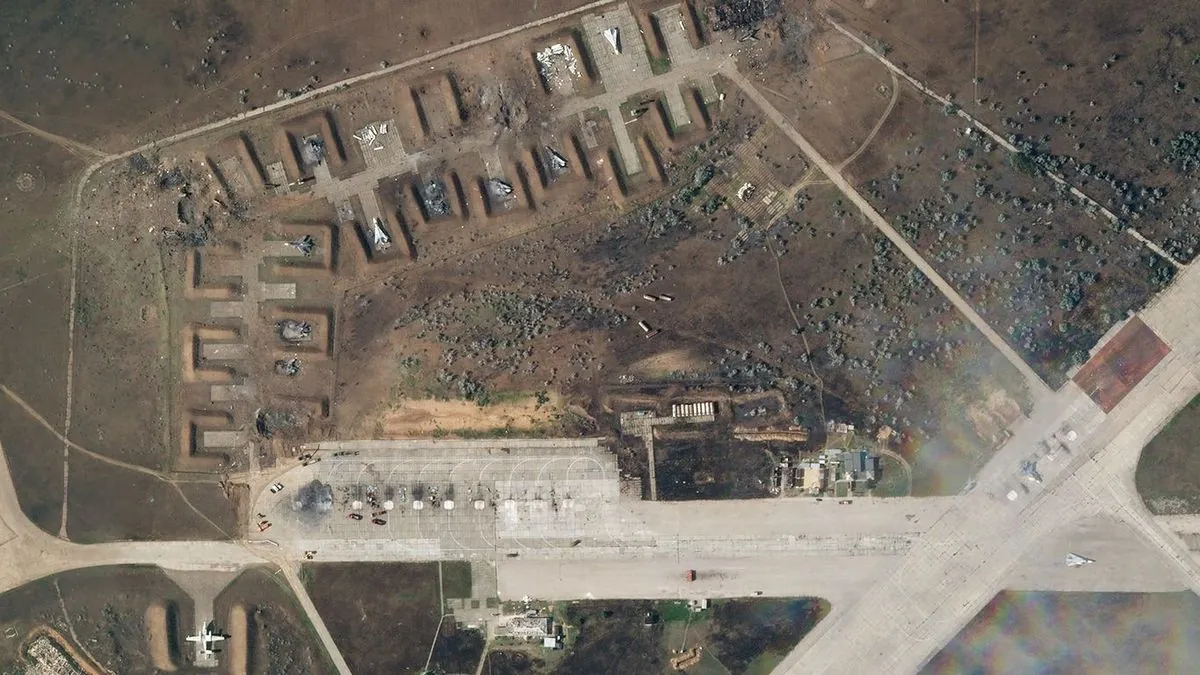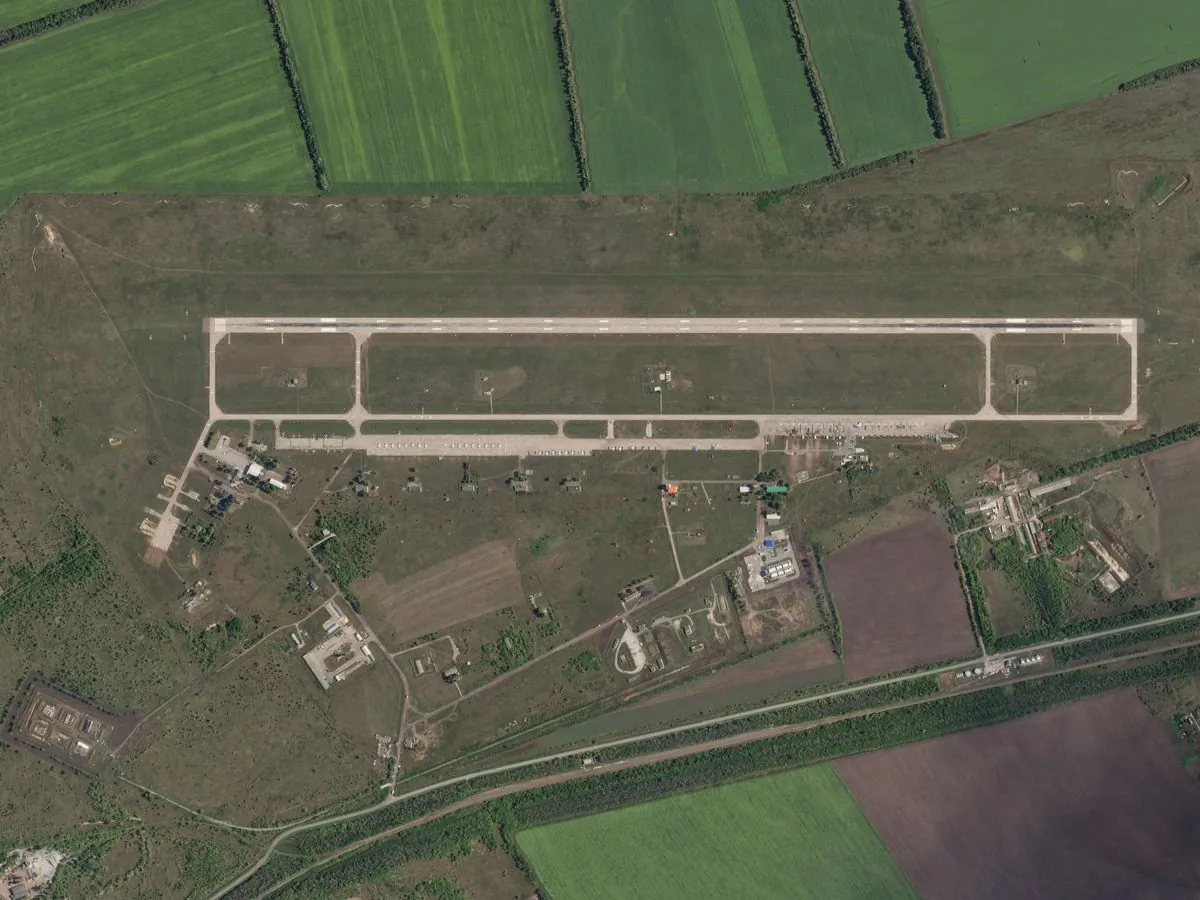Ukrainian Drones Strike Russian Air Bases, Incursion Continues
Ukrainian forces damage Russian air bases and claim territorial gains in Kursk. Russia orders evacuations and declares emergency in border regions as conflict intensifies.

Recent satellite imagery reveals the impact of Ukrainian drone attacks on Russian air bases, marking a significant development in the ongoing conflict between the two nations. The images, captured on August 14, 2024, and analyzed by experts, show substantial damage to at least two hangars at Borisoglebsk Air Base in Voronezh Oblast, Russia.

The attack also affected Savasleika Air Base in Nizhny Novgorod Oblast, where a burn mark was visible on the apron. These strikes demonstrate the increasing use of drones in modern warfare, a trend that has characterized the Russia-Ukraine conflict since its inception on February 24, 2022.
In response to the ongoing Ukrainian incursion into the Kursk region, which began approximately on August 8, 2024, Russian authorities have taken drastic measures. Alexei Smirnov, the acting Governor of Kursk, ordered the evacuation of the Glushkovo region on August 14, 2024. This decision suggests a gradual advance of Ukrainian forces towards the area.
The situation in the border regions has prompted Russia to escalate its emergency response. On August 14, 2024, a federal-level state of emergency was declared in the Belgorod region, following a regional-level declaration the previous day. This upgrade indicates a worsening situation and potential difficulties in aid delivery.
To address the impact on civilians, Russia's Emergencies Ministry has announced compensation measures. Residents suffering severe health damage may receive up to 600,000 rubles (approximately $6,600), while those experiencing property loss could be eligible for up to 150,000 rubles ($1,700).
Gen. Oleksandr Syrskyi, Commander-in-Chief of the Armed Forces of Ukraine, has claimed that Ukrainian forces have taken control of 1,000 square kilometers (about 386 square miles) of the Kursk region. This assertion, however, remains unverified independently.
The conflict in the Kursk region differs significantly from the eastern front of Ukraine, where trench warfare has resulted in slow, incremental gains. The fluid nature of the contact lines in Kursk allows for greater maneuverability by both sides.
Russian officials have dismissed Ukrainian claims of territorial gains. Dmitry Polyansky, Russia's Deputy Permanent Representative to the UN since 2018, characterized the situation in Kursk as "the incursion of terrorist sabotage groups" rather than a established front line. He emphasized the challenging nature of controlling the forested areas, which cover about 45% of Kursk Oblast's territory.
"What's happening in Kursk is the incursion of terrorist sabotage groups, so there is no front line as such. There is an incursion because there are forests that are very difficult to control."
Polyansky further asserted that Ukrainian troops in the forests would be "singled out and eliminated within a very brief period of time," dismissing the operation as "absolutely reckless and mad."
As the conflict continues to evolve, the use of satellite imagery and drone technology has become increasingly crucial in warfare analysis. The international community watches closely as the situation unfolds, with the United Nations headquarters in New York City serving as a focal point for diplomatic discussions on the ongoing Russia-Ukraine war.


































